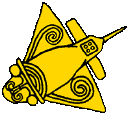The sequence, in which each number is the sum of the two preceding numbers is known as the Fibonacci series: 1, 1, 2, 3, 5, 8, 13, 21, 34, 55, 89, 144, 233, 377, 610, 987, 1597, 2584, 4181, ... (each number is the sum of the previous two).
The ratio of successive pairs tends to the so-called golden ratio(GR) - 1.618033989 . . . . .
The best part of the so called Golden Ratio starts from here on....
1) Petals on flowers
- 3 petals: lily, iris
- 5 petals: buttercup, wild rose, larkspur, columbine (aquilegia)
- 8 petals: delphiniums
- 13 petals: ragwort, corn marigold, cineraria,
- 21 petals: aster, black-eyed susan, chicory
- 34 petals: plantain, pyrethrum
- 55, 89 petals: michaelmas daisies, the asteraceae family
Every human has two hands, each one of these has five fingers, each finger has three parts which are separated by two knuckles. All of these numbers fit into the sequence.

3) Human face
- Leonardo da Vinci painted Mona Lisa's face to fit perfectly into a golden rectangle, and structured the rest of the painting around similar rectangles.
- Mozart divided a striking number of his sonatas into two parts whose lengths reflect the golden ratio
- Look at almost any Christian cross; the ratio of the vertical part to the horizontal is the golden ratio.


Here is a curve which crosses the X-axis at the Fibonacci numbers
This diagram also explains the sacred geometry...Want to know what it is??

The Pyramids were built exactly passing through the edges of the sacred geometry, can this be coincidence??How can that be?? Just bare in mind that;
The true mystery of the world is the visible, not the invisible
and always remember that...Mysteries are not neccesarily miracle...






